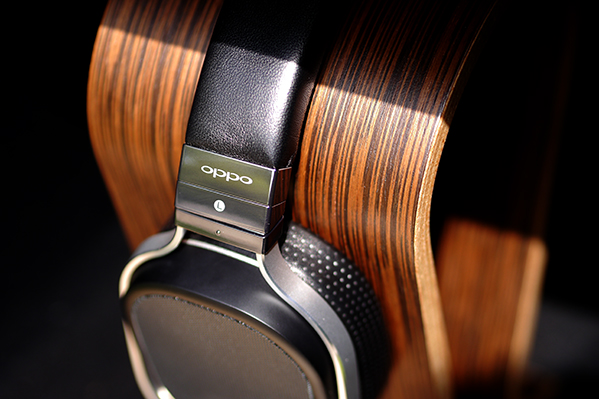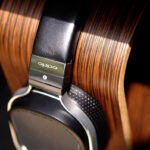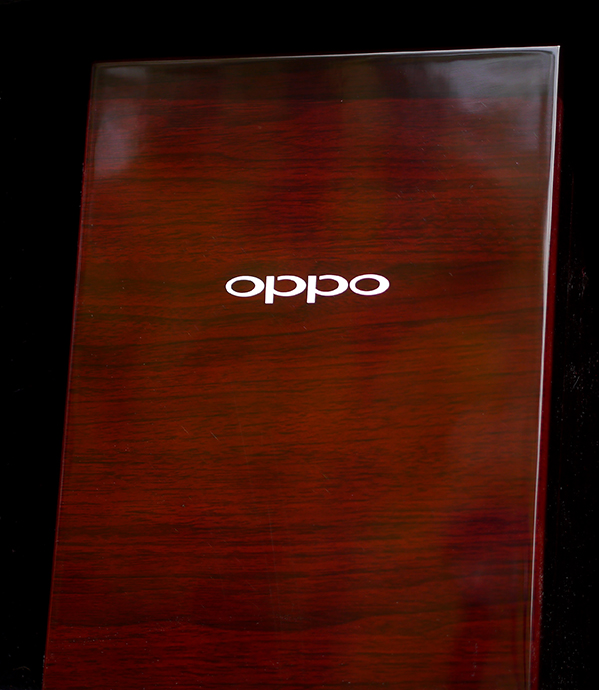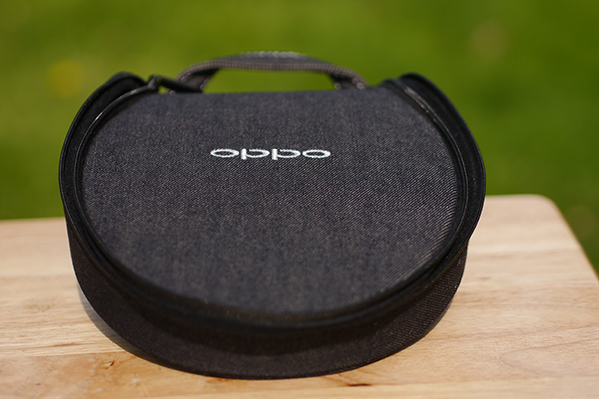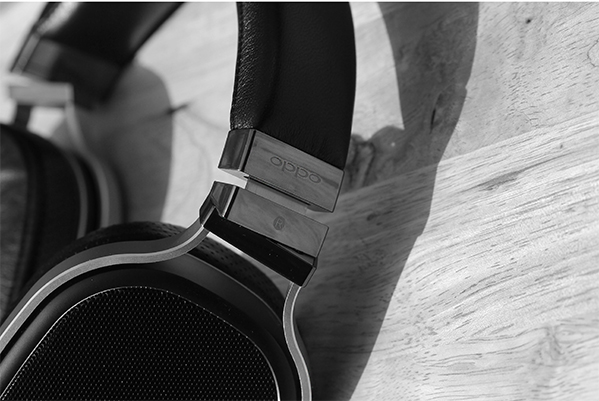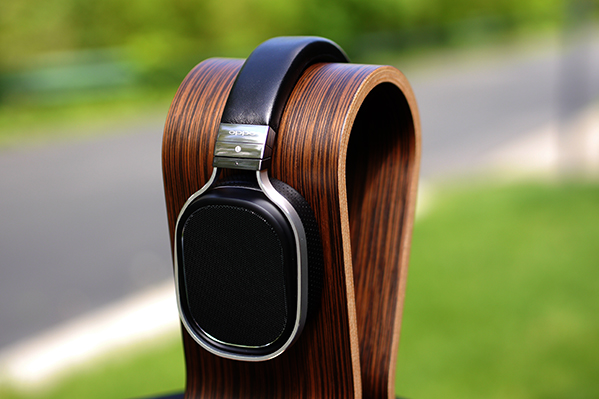The Oppo PM-1 is a new flagship planar magnetic headphone featuring a FEM-Optimized Magnet System. It is priced at $1099.
Disclaimer: The Oppo PM-1 was sent to us as a sample in exchange for our honest opinion. We thank Oppo Digital for this opportunity.
To learn more about Oppo products on Headfonics you can click here.
Note, this review follows our new scoring guidelines for 2021 which you can read up on here.
I recall drooling uncontrollably at my desk back in 2013 when the images of Oppo’s new Planar headphones were first released. Such a sleek and attractive design simply was too tantalizing for me to resist.
That elegant metallic framework and jet black mesh made me want to dive headfirst out of my 2nd story window and howl at the moon. At 395g, the headphone might come off as a bit bulky and heavy on paper, but the reality is quite the opposite. It is probably the lightest planar in the market today.
Comfort
The PM-1 offers a refreshing level of comfort, a far cry from most other headphones that use this type of driver tech and solid metal framework. No dreadful comfort qualities here, thank goodness.
The headphone rests strikingly well on my head and use a Denon Dxxxx series headband style with a luxurious and supple lambskin cover. The lazy and poor headband design is something that really grinds my gears and makes me want to transform into Godzilla and ravage a small city.
Thankfully, Oppo understands comfort and has designed both a great-sounding headphone as well as a comfortable one. The average clamp factor combined with excellent pads makes for one of the most well-designed headphones I’ve ever worn. Mutant X-Men with large ears may have trouble getting a proper fit, but in general, I don’t think it will be a problem for most.
Pads
The PM-1 comes with two earpad types; one is a perforated lambskin material that breathes well, the other is a pure velour material which for me tends to get hot faster than the lambskin.
Usually, the reverse is true and leather/lambskin pads tend to heat up faster on my ears than velours. Weird, but I am not complaining in the slightest because both pads offer excellent comfort. Both use hypoallergenic latex cushions that Oppo says last longer and retain less moisture than typical cushioning materials.
There was a minor, but an evident difference in tone and bass texture when swapping between them. The lambskins seemed the purer of the two and the velour seemed a bit darker, offering a bit more bass quantity.
I must thank Oppo for making it so easy to apply and remove the earpads, this is a wonderful design. Each earpad has four protrusions on its rear sides that neatly lock into place in the inner section of the headphone driver plate. Effortless snap-on, effortless snap-off…easy as pie…exactly how it should be.
Packaging
Oppo has included the most beautiful wooden box I’ve ever seen that might come with a HiFi headphone. It also comes with a full-sized 1/4 styled cable, a shorter 1/8 portable length cable, and a neat carrying case made out of jean-jacket type material.
It seems a bit much for me on the box, as I’d never hide the headphone in a protective box like this. I’d rather keep them on my Omega stand for people to see and swoon over.
In July, Oppo will be releasing a similar headphone with the same drivers inside a cheaper housing called the PM-2 probably without this gorgeous box that must have cost a pretty penny indeed.
For the price as is, with all these wonderful things included, the Oppo PM-1 is a best buy even at $1099 when it comes to sound quality. Oppo hit this one out of the park in terms of price to performance.
Sound Impressions
Bass
Like a good wine, the PM-1 low end offers a refreshing and firm experience that is both memorable and highly engaging. This is not a balanced-sounding headphone by any means and was intended to be the average consumer’s best choice for entry into the HiFi world.
Musicality is top tier on this headphone as well as on my list of necessary qualities an audio product must-have. Thank the audio deities that Oppo has heeded my prayers.
The bass on the PM-1 isn’t the most well textured and tonally amazing, but it certainly isn’t lacking. It is very plentiful and firm, something Oppo ( as well as myself ) feels that the average consumer would best enjoy. It is highly engaging with a very good impact that won’t be too harsh even with a firm bass booster active.
At 32Ω, the PM-1 is nicely driven by light to moderate amplification and your higher grade audiophile Daps out there are going to power this headphone as easily as a nuclear reactor would.
With that in mind, your bass experience will be plentiful in most setups. My recommendation would be to try to tailor your portable or home rig with a source or amplifier that has a less pure sound signature on the low end. Maybe, something that is a bit warmer and more velvet-like instead of stark neutral.
The PM-1 isn’t nearly as pure on the low end as the Audeze LCD-2 or LCD-3, which side by side with the PM-1 sound liquid-like, raw and incredibly unbiased, and pristine sounding, like a solid rock wall emitting bass.
The PM-1 sounds more like a Hifiman HE500 than the LCD-2 on the low-end tonality. There is no question that the PM-1 bests the HE-500 on quality and quantity, firmness, and weight.
Bonus Round
I’ve found the low end of the PM-1 to be the most satisfying of any headphones I currently have on hand when it comes down to pure musicality and quantity. While the LCD-2 is still untouchable in the purity of tone, texture, and coloration in this price tier, I always find myself bass boosting the LCD-2 to achieve more quantity.
As a result, the punch and kick get too out of control. This doesn’t happen with the PM-1. From classical to jazz, gaming to movies the PM-1 low end is vibrant and plentiful so I would recommend a Burson amplifier on low gain.
Or your pick of any of the Ray Samuels portable amplifiers, which tend to have a more robust low end with a darker sound signature that will match up nicely with the PM-1.
My RSA F-35 Lightning in pure balanced mode with a gorgeous balanced Artemis cable makes for an incredibly wonderful, yummy, and lively bass experience. Even on a dead flat EQ setup, my Red Wine AK120 portable player plays very well with this headphone.
I personally do not find the low end on the PM-1 to ever lack in any specific genre. With more power comes a more firm bass experience, especially in a balanced rig. The bass firms up a bit over its stock sound signature that is noticeably more loose sounding than the LCD-2 Rev2.
With the PM-1, the low end, even while bass boosted, will not lose control so easily. So long as you do not go absolutely insane and crank your low end up too far Oppo’s PM-1 will cradle your experience and remain yummy and responsive down to 10hz.
Gamers
Gamers are going to enjoy this headphone not only for the stellar comfort and ease of use for long gaming sessions but also for the tasty and plentiful low-end experience but with a minimal severe punch and kick.
Something let’s say the Sennheiser HD800, AKG K812 and Audeze LCD-2/3 tend to have while gaming. Opting for a more soft but weighty approach to the bass, the PM-1 will satisfy gamers of all types.
The journey through Borderlands 2 for the PC is jam-packed with explosions and an absolutely mind-bogglingly large pool of different bullet and explosive sounds that seemingly never ends. The PM-1 handles the entire experience incredibly well and with a vibrant flare that is absent in every other headphone I’ve named so far in this review.
Most of those simply have too much kick to the bass and it tends to get annoying very fast. Thankfully, the PM-1 will handle those sudden and frequent explosions and loud noises very well while retaining a nice amount of quantity and quality without sounding overblown. I think the Battlefield and Call of Duty players are really going to love these headphones.
Mids
This headphone is incredibly lush sounding, more so than the LCD-2 Rev2 I have here, and far outshining the HD-800 and K-812 as well with the overall weighty and intimate sound signature.
The headphone sounds extremely thick and has a stellar amount of body to the entire frequency spectrum, top to bottom. The HD-800 and K-812 sound paper-thin by comparison. If you are into a load of body, intimacy, and heft to your sound signature, this is the headphone for you.
This headphone has one of the darkest and most blackened backgrounds I’ve heard in a long time. It makes the HD800 and K812 feel like my mind’s eye is looking directly into a light bulb by comparison.
With that jet black background, the midrange pops more and enters the stereo void seemingly from nowhere. Vocal experiences are highly engaging and intimate, but they are also lacking a sense of the depth of field in the stereo imaging.
Esperanza
Esperanza Spalding is a fantastic and simply gorgeous jazz artist, vocalist, and upright bassist. A little gem in the current music world that really can move you and shock you with her talent for the arts.
Her self-titled album holds one of my favorite songs of all time called “Fall In”. Not a particularly fantastic recording in terms of clarity but one that is highly engaging, intimate, and emotional.
Lately, it has been my ‘go-to’ reference track for vocals and forwardness testing. Sometimes I get lost in her voice and forget I am trying to review something, lost to the void and floating somewhere in space free of gravity and the stresses of life.
When a headphone can do that, as not many can, I tend to get excited and start to take my listening very seriously for a few minutes and end up totally ignoring the world around me. Only intimate and highly musical headphones can do that for me and it is something I’ve hunted for years to find.
Only a few other headphones have achieved this level of musicality and intimacy. Headphones like the Audeze LCD-3 or customs like the JH16 Pro custom monitors I would put in that bracket. I must say, I am very impressed by how well the PM-1 reacts to jazz vocals and the slower moderately-paced type of genres.
This is a very clear, but very sluggish headphone that is not quick on the draw, and in turn, those faster-paced tracks may seem a bit clustered and congested. The slower the track, the more lush and detailed the pace of your music, the better the PM-1 will sound in my opinion.
Treble
50,000hz is a very high ceiling and doesn’t seem reflective of what my experience told me this headphone might sound like. I’d expected a lot of bite to it, abundant brightness, and maybe even an icy flavor to the treble experience on the PM-1.
Shockingly, that sentiment is the polar opposite of what the actual headphone delivers. Oppo has opted to play it safe and tuned the PM-1 with a mildly relaxed treble presentation, which is something I am not wild about but also something I really cannot complain about either.
It has excellent clarity, but it is lacking the same dynamics present in the bass and midrange. Therefore it comes across as a bit relaxed, which is a great thing for those sensitive to painful treble but also has the most gentle hint of brightness. It reminds me of a very toned-down Hifiman HE-500 in terms of brightness and quantity, but slightly more pure sounding.
5th Element
The track “Lucia di Lammermoor” off the Fifth Element OST is a vibrant and bright operatic track with very slow pacing, one that nicely shows off the treble potential of the PM-1. Seductively, the woman ( an alien in the movie ) has the ability to push immensely well-controlled treble through her voice.
With the PM-1 it comes across as a bit too restrained for me. I have an odd feeling that the drivers are struggling when they try to reproduce the treble peaks inside this very demanding track.
Something is a bit off, something that isn’t a problem with my Hifiman HE-500, HE-6, or HD800 on this track. I can call this just pretty good treble responsiveness.
A notch or two away from being very good. Almost as if the treble is a bit shaky. It struggles too hard and becomes a bit cloudy when it should be purer with a bit more quantity to help accentuate tracks with violins, screaming guitars, and great jazz or operatic vocalist tracks.
In terms of engaging qualities on the treble, it still does a better job than the drier and shelved-down approach of the Audeze LCD-2.
Stereo Imaging
If this headphone has a major fault, it is the lack of width and the depth of the stage. This is a Planar headphone so I can’t really at all complain about the lack of width, since both Audeze and Hifiman fail miserably in this department, as do most Planars really.
I had hoped Oppo would be able to squeeze some really nice sonic depth of field out of this headphone but sadly that isn’t the case with the PM-1. It sounds more like a Hifiman HE-500 or HE-400 in terms of that ‘reach out and touch the artist’ feel.
I wanted this headphone to really trump the other Planar Magnetic designs out there and the PM-1 really fell short here, failing to impress me.
This headphone sounds like a shallower Koss ESP-950; a headphone with a taller than a wide sound stage, clearly and purposely set up to be as intimate as possible. Lacking a good sense of width, the overall stereo imaging and separation qualities mirror Hifiman in my opinion.
If I had to compare it to anything, the closest Planar headphone with similar sound staging qualities would be the Hifiman HE-500. Is that really a bad thing considering the HE-500 is one of the most well-rounded headphones on the market?
Select Comparisons
Audeze LCD-2 Rev2
The LCD2 is the closest headphone that the PM-1 can compare to with regard to pure sonic clarity. To me, the PM-1 is a more comfortable sidestep or alternative for anyone interested in buying the Audeze LCD-2.
There are a few differences of course. The Audeze has a more raw and pure bass, pristine in execution, and lightning-fast, whereas the PM-1 has a slower and more loose but weighty texture.
The Audeze midrange sounds a bit more distant and the treble is dry and less colored, the PM-1 midrange is more vibrant, thick sounding, and intimate with a more obviously colored treble response.
Audeze LCD-3
Audeze’s LCD-3 offers in my opinion the best tonality in any headphone ever made, with a perfect balance of purity and gentle warmth on the low end, very good depth of field, and bass quality.
The PM-1 suffered a defeat in the sonic clarity department compared to the LCD-3. Comfort and well-roundedness are the only two areas the PM-1 headphones were able to defeat the LCD-3 in. Audeze’s background is less noticeable and more invisible, where the PM-1 background is noticeably jet black and omnipresent.
Hifiman HE-500
If you liked the Hifiman HE-500 you really should be considering paying the extra cash for Oppo’s PM-1, as to me it is a more clear and similarly setup sounding headphone in terms of stereo imaging.
The treble on the Hifiman has superior quantity and is much more noticeable. The PM-1 is much more relaxed with less quantity but retains a very slight but noticeable brightness to it. The HE-500 bass feels less firm and solid, as does the midrange.
Sennheiser HD800
Surprisingly, on entry-level summit level source and amplification, the PM-1 and the HD800 share similar midrange quality. Via my Red Wine AK120 and Burson Conductor SL, it becomes very hard for me to decide which one has the more clear midrange.
Certainly, the HD800 smashes the Oppo in staging and treble potential, but it lacks that beautifully darkened background and rumbling low end the PM-1 has in abundance. Properly amped, the HD800 has some shockingly great treble that the PM-1 will never be able to obtain.
AKG K812
The PM-1 simply is a better headphone in every way and for a lot cheaper. The only real quality the K812 has over the PM-1 is sound staging, which is exceptionally well-formed with a good sense of width, something the PM-1 severely lacks.
The treble on the K812 is just so awful sometimes that when I compare it side by side with the PM-1, I cannot help but feel incredible relief to not have to listen to that painful and icy upper end anymore.
The PM-1 low end is more firm, more weighty, and much more responsive. I feel the PM-1 midrange sounds clearer than the K812 in the rawest sense of the word. This is odd for me because I really like the K812 when it is properly EQ’ed but the K812 sounds so thin and lifeless compared to Oppo’s PM-1.
Hifiman HE-6
Properly amped, the HE-6 is just one of the most tonally beautiful headphones on the market and I found it to outperform the PM-1 significantly on the treble and low-end clarity. However, having a great treble response and a powerful low end made the midrange of the HE-6 sometimes a little forgotten.
The PM-1 is noticeably more intimate and once again has a darker background, so everything seems to have a bit more pop. The PM-1 has a lusher thicker sound but the HE-6 has more weight on the low end with a purer and cleaner bass experience and a more sparkled treble response that leaves the PM-1 a little dusted and confused.
Our Verdict
In the end and at $1099, Oppo’s PM-1 is a fantastic first step for this company into the headphone world. Oppo set out to achieve something specifically set up for a consumer-grade-hifi sound signature. They nailed it. There is a new Titan on the block and the Old Gods need to pay heed and tribute.
In terms of sonic clarity to price ratio, the PM-1 is very good. Smart and practical design fused with very nice sonic qualities will make for one of the best entry-level summit headphones on the market.
Musicality is through the roof on these headphones. Minor fixes would make this headphone a solid 10/10, but I am giving it a 9/10 instead. In my humble opinion, the PM-1 offers one of the best values to performance ratios in the headphone world. Great job, Oppo!
Oppo PM-1 Specifications
- Acoustic Principle Open back
- Ear Coupling Circumaural
- Nominal Impedance 32 Ohm
- Sensitivity 102 dB in 1 mW
- Clamping Pressure 5 N
- Cables 3 m detachable OCC cable (6.35 mm)
- 1 m detachable OFC cable (3.5 mm)
- Cable Connectors Output: 2.5 mm mono mini jacks
- Input: 6.35 mm stereo jack, 3.5 mm stereo jack
- Weight 395 g (without cable)

